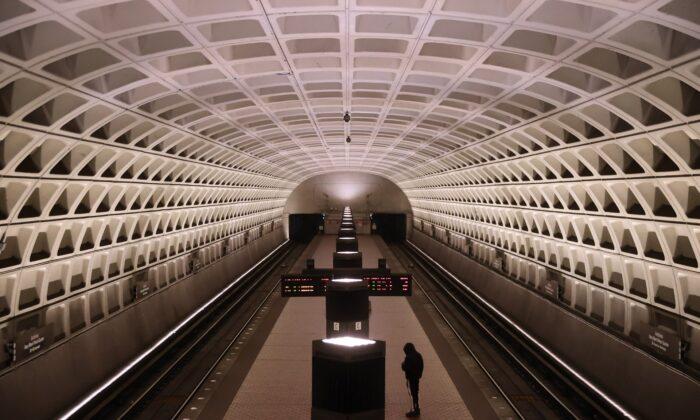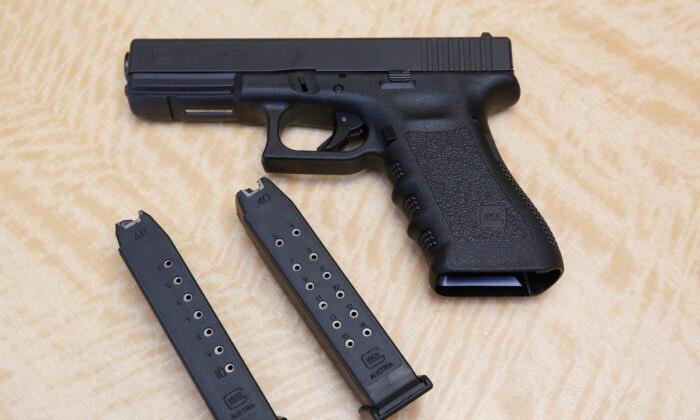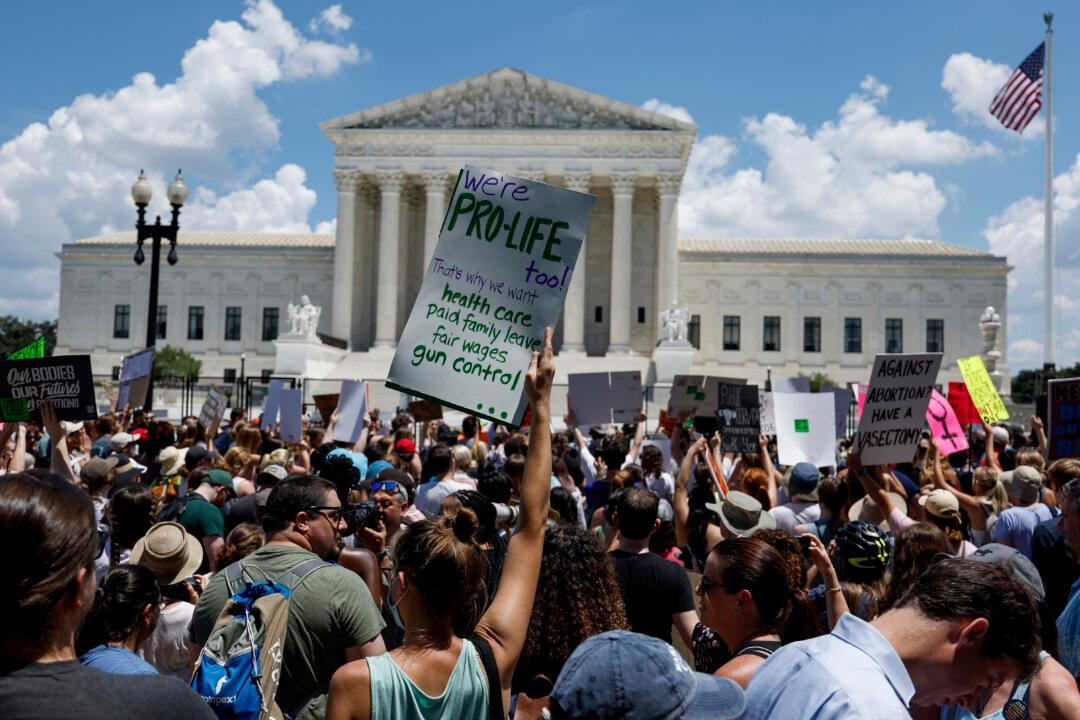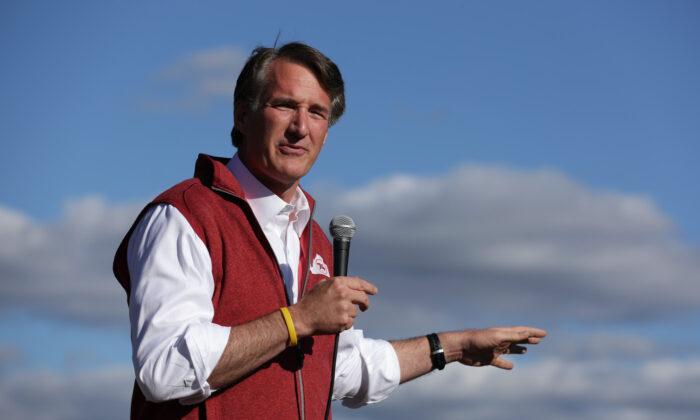Washington Metro Area Transit Authority’s (WMATA) Metro train and bus system is facing a mammoth financial deficit of $750 million.
The last few years of reduced ridership and inflation have exacerbated the Metro’s preexisting structural financial problems, and unlike the previous years, the coming fiscal years could see major cuts in service and wreak havoc on the area’s economy, said WMATA officials.
If neighboring jurisdictions and other stakeholders do not work together to find a long-term sustainable solution to the deficit, it will force WMATA to make major cuts to service, leading to a “death spiral,” said WMATA officials.
“This would hurt the region’s economic competitiveness and degrade the quality of life for the people in our region,” said Tom Webster, chief planning and performance officer, during a June 22 board meeting.
WMATA board members and administrative staff gathered at a regular board meeting to discuss major issues, including the impending financial problem of federal money running out, possibly before the end of 2025.
“This is real. This is not an every-year occurrence. This is not a standard operating procedure,” Matt Letourneau, chairman of the WMATA board of directors, said in response to members of the public saying the same financial problem is bought up every year.
“This is an existential threat for Metro, it’s not a one-time piece,” said Randy Clarke, general manager and CEO of WMATA. “I believe we need a stable, predictable, and sustainable funding source for Metro and I fundamentally believe that needs to be both operating and capital.”
In 2018, Metro’s funding partners came together and established a capital funding source that provided $500 million each year, which left the rest of WMATA’s financial needs to be filled by a “dedicated funding source,” said Clarke.
“I think the public rightfully is probably wondering why we’re buying new trains going to zero-emission buses and building new bus facilities where next year we may not have enough money to operate said trains and buses,” said Clarke.
The board is trying to address the issue early so that the region can come together to solve the fundamental financial issue with a long-term solution, said Clarke.
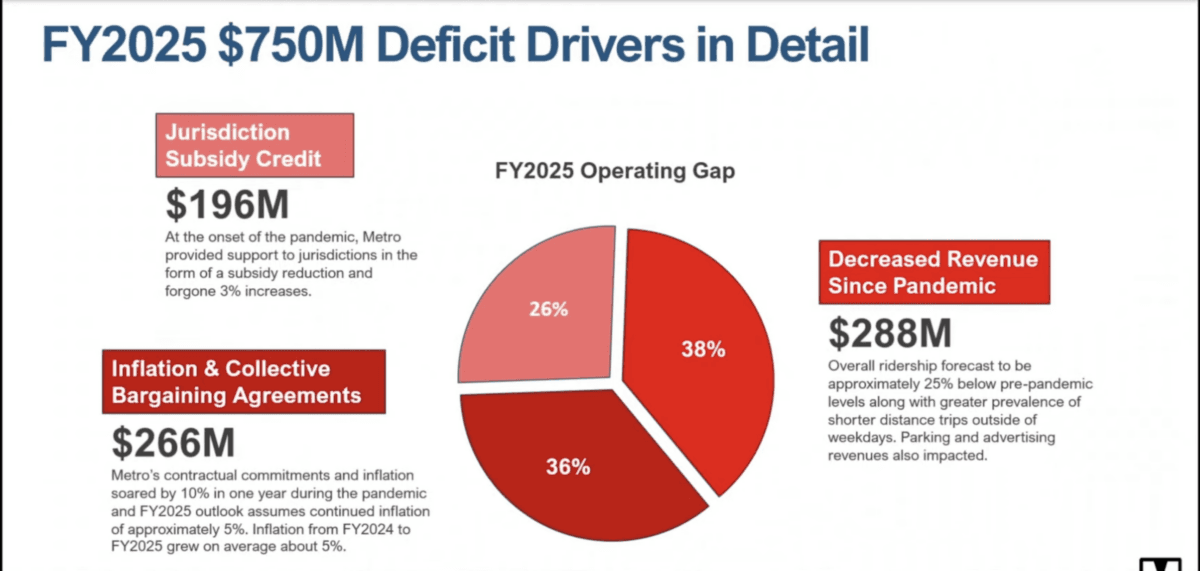
Short-Term Federal Funding
State and local subsidies have typically paid for about half of Metro’s operations and maintenance. Fares and other revenue typically made up the other half of the operating funding, said Yetunde Olumide, WMATA’s chief financial officer.When ridership was depleted because of the pandemic, the federal government made up the lost revenue.
“Federal relief accounts for the remaining 24 percent of the [Fiscal Year 2024] budget and is projected to run out before FY ‘25,” said Olumide. “The end of federal relief is creating funding challenges for transit agencies across the country.”
Even with ridership having returned to 75 percent of prepandemic levels, there are areas still underfunded, including $196 million less from the jurisdictional subsidy credits; $288 million from decreased revenues from fares, parking and advertising; and $266 million in inflation and union agreements.
Metro cannot solve this problem on its own and was considering “doomsday” cuts to Metro routes before the federal government stepped in, said Olumide.
Service Cuts Not an Option
Webster said it’s not feasible to close a 25 percent revenue loss with a 25 percent service cut.“To close a deficit of this magnitude, without additional operating funding or investment, Metro would have to severely cut service at a really catastrophic scale,” he said.
The Metro administrative team presented one of these “doomsday” scenarios of Metro cutting its services to make up for the projected $750 million shortfall. That would mean a 67 percent cut in service, said Webster. This strategy would eliminate the deficit.
“However, customers would certainly abandon the system, ridership would stop growing, and it would be extraordinarily crowded,” said Webster.
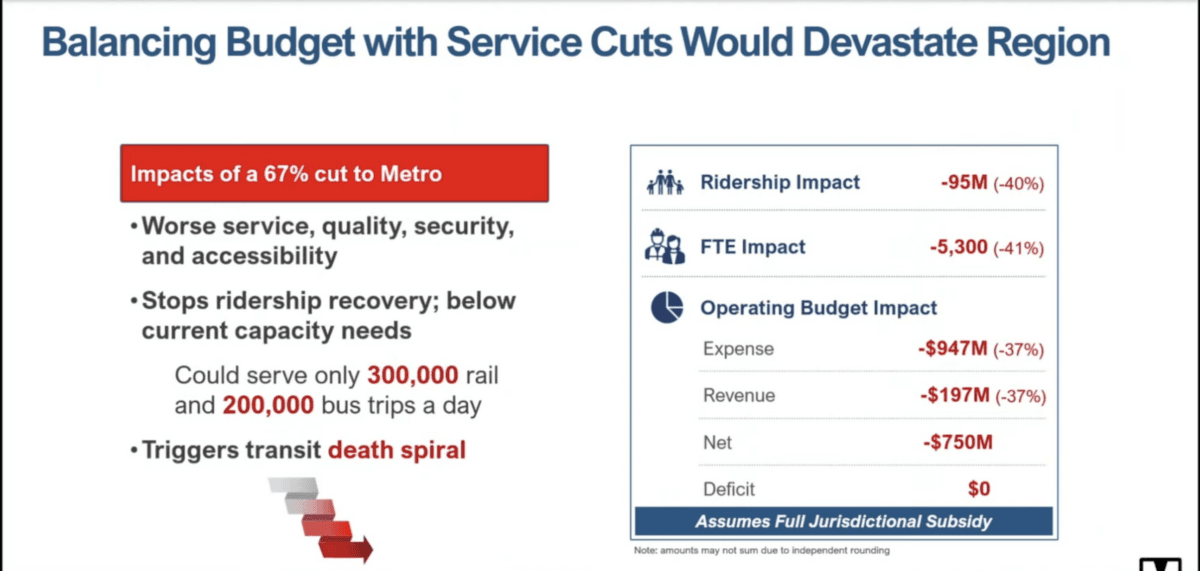
Under this scenario, 5,300 jobs would be cut, meaning about 40 percent of Metro employees would need to be laid off, said Webster. In addition, the service cuts would affect the times trains and buses were operating, hence long wait times, as well as the cleanliness and safety of service.
“The impacts on our customers and on ridership are quite clear from a service reduction scenario of that scale, but it’s not just customers that would be hurt by this. The whole region would feel the pain of service reductions at this scale,” said Webster.
This would lead to more people driving, more congestion on the roads, pollution, and lost opportunities, said Webster.
Money to Close Fiscal Gap
Webster said fare evasion is not the total reason for the loss of fare revenue, because even if everyone paid their fare, it would only bring in $30 million on trains and $11 million on buses, hardly meeting the $750 million needed, said the administrators.Letourneau said Metro is addressing fare evasion with new gates and more officers at the stations.
Lucinda Babers, deputy mayor for operations and infrastructure for the District of Columbia, also sits on the WMATA board.
“We‘ll absolutely have to look at some long-term solution, but we’ll also be looking very intently at the savings and can we get any more savings,” Babers said.
Board member Tracy Hadden Loh said the board would need to start looking at the situation at a granular level to understand all the pieces of the puzzle and ultimately fix the problem.
“There are pieces of this that are under this board’s control and that are under WMATA’s control, such as the fare policy, such as our advertising policies, such as non-union labor force, size, and compensation,” she said.
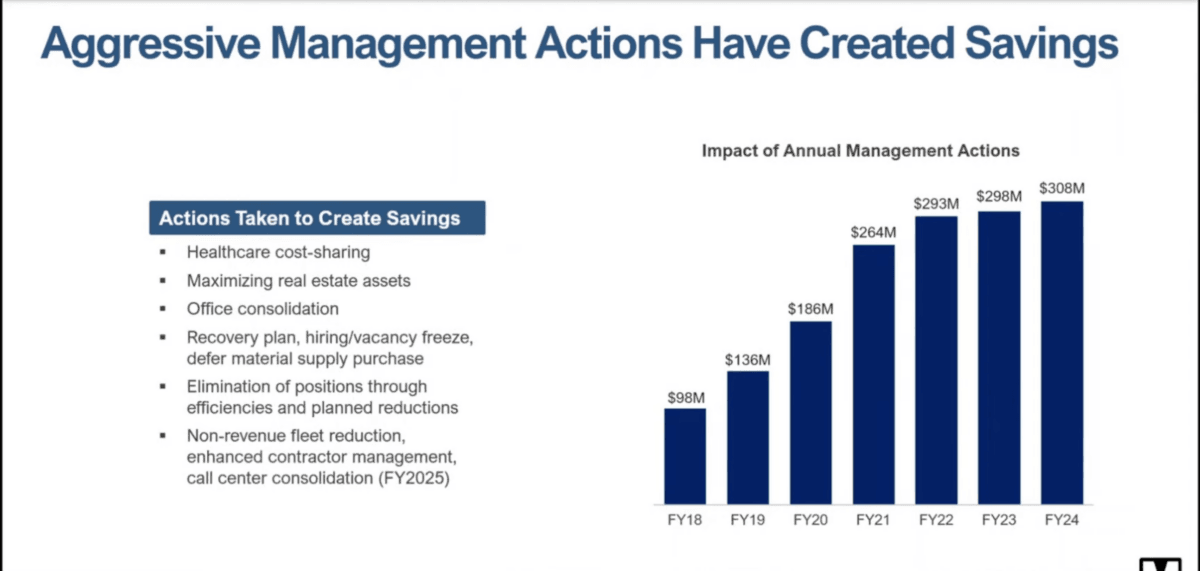
Loh said because WMATA serves the capital of the United States, it is required by law to balance its budget every year.
“The district is under financial and fiscal legal requirements that other jurisdictions are not under in order to always have a balanced budget, projected forward for years, and to be sure that we are doing everything that we’re supposed to be doing fiscally,” she said.
Loh stressed that with any revenue solution, it will take time for the cash to start flowing into WMATA’s accounts. She said in 2025 the board will need to solve two problems.
“One, what can we do for FY ‘25 in terms of cash flow? What service will we be able to offer that matches that cash flow?“ she said. ”And then in the longer term, what do we want WMATA to be and how are we going to pay for it?”
